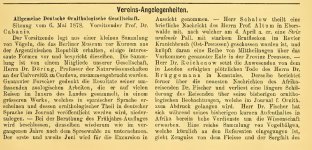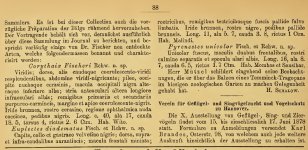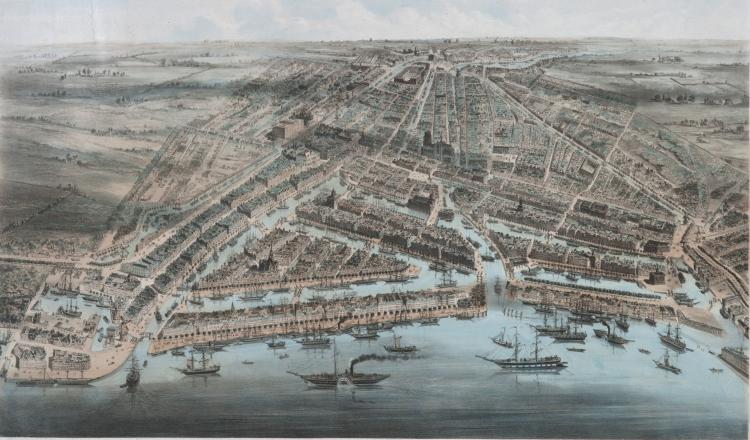Björn Bergenholtz
(former alias "Calalp")

Here´s another sad, early lost, German naturalist …
This time we´re focusing on the species Fischer's Turaco Tauraco fischeri REICHENOW 1878 a k a "Fischer's Touraco" or "East African Red-crested Lourie" alt. "Fischer's Loerie".
I think there is little doubt that it commemorates the fairly un-known (at least among English speaking ornithologists) German explorer and collector Doctor Gustav Adolf Fischer (1848–1886), who on at least two Expeditions explored the wildlife in East Africa, between 1877 till 1885/86.
The Turaco was presented for the first time by the great German ornithologist Anton Reichenow, as "Corythaix Fisheri" on a meeting 6th May 1878 In the short type description (published the same year), in the German ornithological Journal Ornithologisches Centralblatt 3: pp. 87-88 (attached) the Secretary of the meeting writes the following sentences of this Reichow's presentation:
Anyone of our German knowing friends "out there" feel like having a go?
This time we´re focusing on the species Fischer's Turaco Tauraco fischeri REICHENOW 1878 a k a "Fischer's Touraco" or "East African Red-crested Lourie" alt. "Fischer's Loerie".
I think there is little doubt that it commemorates the fairly un-known (at least among English speaking ornithologists) German explorer and collector Doctor Gustav Adolf Fischer (1848–1886), who on at least two Expeditions explored the wildlife in East Africa, between 1877 till 1885/86.
The Turaco was presented for the first time by the great German ornithologist Anton Reichenow, as "Corythaix Fisheri" on a meeting 6th May 1878 In the short type description (published the same year), in the German ornithological Journal Ornithologisches Centralblatt 3: pp. 87-88 (attached) the Secretary of the meeting writes the following sentences of this Reichow's presentation:
With only limited knowledge of German I hope someone of Bird Forums readers will feel like translating this quote for me!? If so, please as accurate as possible, as I would like to quote it myself in Swedish. And don´t hesitate to remark on any errors that I might have done transcribing it."Herr Dr. Fischer hat sich während seines bisherigen kurzen Aufenthaltes in Afrika bereits hohe Verdienste um die Wissenschaft erworben. Eine reiche Sammlung von Vogelbälgen, welche kürzlich an den Referenten eingegangen ist, giebt Zeugniss von dem Fleisse und der Sorgfalt des Sammlers. Es ist bei dieser Collection auch die vorzügliche Präparation der Bälge rühmend hervorzuheben. Der Vortragende behält sich vor, demnächst ausfürlich über diese Sammlung im Journal zu berichten, und bespricht vorläufig einige von Dr. Fischer neu entdeckte Arten, welche folgendermassen benannt under charakterisirt werden: Corythaix Fisheri Rchw. n. sp."
Anyone of our German knowing friends "out there" feel like having a go?









